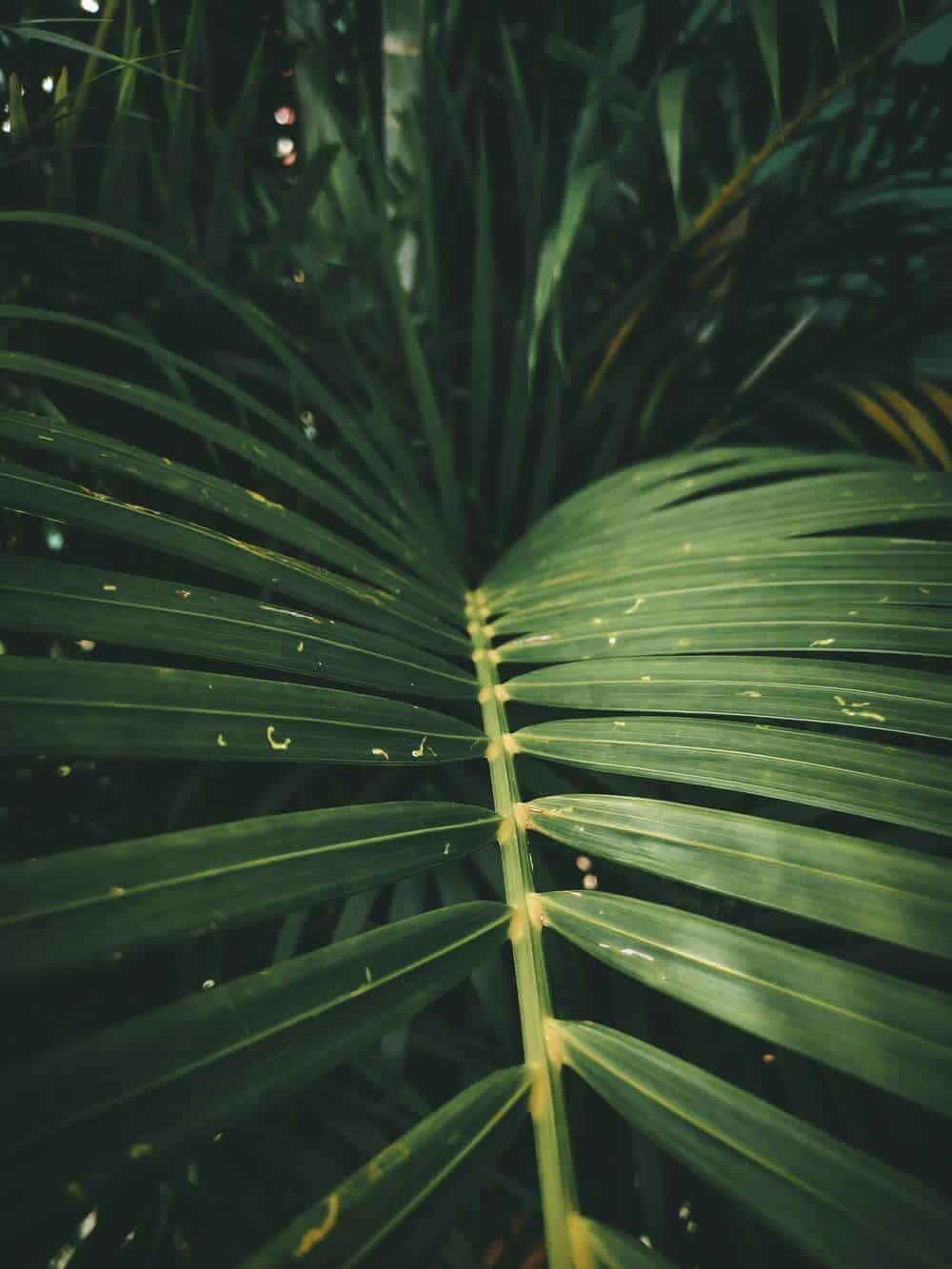Last Updated on January 9, 2023 by a Friendly Gardener
Resembling bamboo, the perennial Areca Palm is a graceful clumping palm native to Madagascar characterized by its narrow fronds emerging from gold or greenish trunks. These palm plants can grow to twenty-five feet in height. Botanically known as the Dypsislutescens or Chrysalidocarpus lutescens, it belongs to the Palmae family.
The Areca palm is cultivated indoors as a houseplant as well as outdoors and confers a touch of tropical elegance in any location.
Arecas grow as much as ten inches annually until they reach their mature height of about seven feet for those grown indoors. Happily, the Areca is a plant that absorbs airborne toxins and releases oxygen in the nighttime.
When cultivated outdoors they have a lifespan of roughly ten years. The lifespan is generally shorter indoors. The Areca is also called
- Bamboo palm
- Yellow palm
- Butterfly palm
- Golden cane palm
Areca Palm Care

For outdoor cultivation, the garden soil needs to be well-draining. Palms can be subject to root rot, so water-laden soil is problematic. Indoor a well-draining pot and soil mix will benefit cultivation.
Outdoors, your palm needs water if the soil bed dries, especially in hot weather or arid climates. A palm cultivated indoors needs bright light, and in summer, move your palm outdoors.
Soil
Use a well-draining peat-based soil indoors. Outdoor cultivation requires organically rich slightly acidic soil that drains well. Mix in a bit of peat moss and sand to improve the porousness of the soil bed. The soil pH should measure between 6.0 and 6.5.
Light

Outdoors your Areca palm will flourish in bright filtered sunlight. It can tolerate direct full sunlight. Ideally, look for a spot with a minimum of protection from the afternoon sun to avoid scorching the fronds. Indoor palms are happiest in a west or south-facing window.
Water and Humidity
The Areca palm likes moist soil but is at risk for overwatering. The soil must never be soggy. Do not leave them to sit in water as this might lead to root rot.
Allow the soil to dry a little before watering. Areca palms are highly sensitive to fluoride content in water. If you use municipally supplied water that is fluoridated, use either distilled water or collected rainwater. This palm is also sensitive to the chlorine content in water. If using tap water, leave it out overnight before watering. This will dissipate chlorine and fluoride.
The Areca palm needs higher humidity. The Areca will adjust to the level of humidity where it is located, but with dry air, brown tips will appear on the fronds. Space humidifiers can resolve this. Daily misting will also aid somewhat with humidity needs. Pebble trays and grouping plants together can also improve the location’s humidity level. Ideally, the humidity level should measure above 45%.
Temperature
Your Areca palm prefers temperatures between 65° to 75° Fahrenheit. Temperatures should not fall below 50°F. When cultivating the Areca indoors, protect it from drafts hence away from doorways, hallways, cold windows, and air vents.
When placing your Areca during the summer, bring it inside if the evening temperatures dip under 50°F. Cold exposure can cause dark patches on fronds.
Feeding

This palm has a somewhat voracious appetite! The Areca is a heavy feeder and will benefit from consistent feeding from early spring to early fall. One challenge when feeding this plant is that the Areca is pretty sensitive to salts found in fertilizers. Repot the Areca annually with fresh soil to help. Use a liquid fertilizer with an NPK of 12-4-12 and dilute it to half-strength before applying. During dormancy from autumn through winter, it is best not to feed your palm.
Pruning
Healthy canes will generally appear yellowish gold in color. Grey or brown fronds may be dead. You can monitor canes’ health by removing a small strip of their bark. If the cane appears green underneath, it is alive and thriving. If it is dark, the cane is dead, and you should prune it.
Gardening clippers work well when pruning smaller canes. Larger canes may require a saw. Always prune at the ground level. When pruning multiple palms, disinfect the cutting tool before each plant. Dip your utensil in diluted bleach and rinse before using anew.
Do not prune frond tips as they may cease to grow. Do not prune the canes unless damaged or dead. Also, limit the number of fronds you trim away because trimming too many can be lethal. Sometimes dead fronds will drop spontaneously making pruning unnecessary.
Repotting

Areca palms prefer to be a bit root-bound but good drainage needs to be assured. Their size will be limited by maintaining roots a little cramped in pots. Repot your palm every two years to ensure nutritious soil and eliminate accumulated salt deposits.
When repotting, if the root ball still fits in the pot, reuse it. If your plant has grown and needs more space, go up one size. Clay pots are recommended for drainage and weight purposes. If your palm is tall, avoid using a lightweight planter, or your plant risks toppling over.
Areca Palm Propagation

Areca palms are propagated from seeds. Several seeds should be planted together. These seeds are not often found in nurseries or garden centers. If you are fortunate enough to find some, plant them in a seed-starting potting mix, and sprinkle a light cover over them. Orange-tinted seeds offer better germination than green seeds because they are more mature.
Seeds require approximately six weeks for germination. Keep soil warm at about 80°F and in a spot with high humidity. The seed-starting soil bed should be kept lightly moist. Upon germination, allow your seedlings to grow about four inches high and develop several leaves. Then transfer them to individual containers.
Mature Arecas may produce offsets at the plant’s base. Divide these from the mother plant by loosening the soil to locate roots. Cut with a clean sharp tool to divide. Place the new plantlet in a container and water well.
Toxicity
The ASPCA (American Society for the Prevention of Cruelty to Animals), informs that the Areca palm is non-toxic for cats, dogs, and horses. It’s a great houseplant for families with pets.
Pests, Diseases, and Problems
Indoor Areca palms are susceptible to the typical houseplant pests such as aphids, mealybugs, mites, scale, and whiteflies. They can damage fronds and cause discoloration. Treat infestations using organic Neem oil or insecticidal soap.
The Areca palm is relatively resistant to disease but can contract a bacterial infection known as Lethal Yellowing. Carried by insects, the bacteria cause frond deaths and will lead to the death of the palm. It is more common in outdoor palms. There is no cure, so plants should be removed and destroyed.
Fronds can suffer from a lack of light. Remove dead fronds and move your plant to a brighter spot. Yellowing palms can also indicate leaf-spotting fungi. Remove and destroy affected palms.
Gliocladium blight or pink rot caused by Gliocladium vermoeseni is a fungal infection that causes stems to look pink by covering them with pink-hued spores. Left without treatment, this fungal infection will rot any part of the palm. Overwatering creates the conditions for this illness. Prune any affected parts, sterilize the container, repot the palm, and provide fresh soil. In the case of a severe infection, dispose of the plant.
In Conclusion
Create your very own tropical location at home or in the office with Areca’s graceful fronds. This is a low-maintenance non-toxic palm that is perfect for families with pets and ideal for adding a touch of elegance to your business, office, or lobby.

